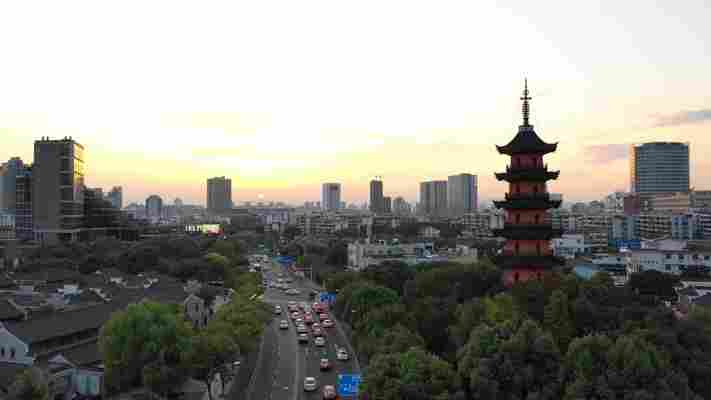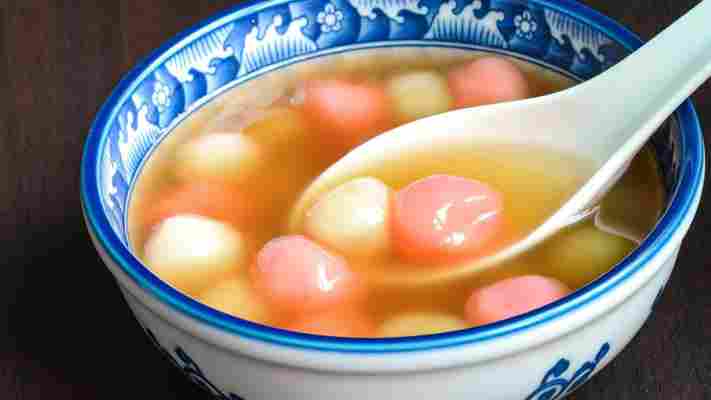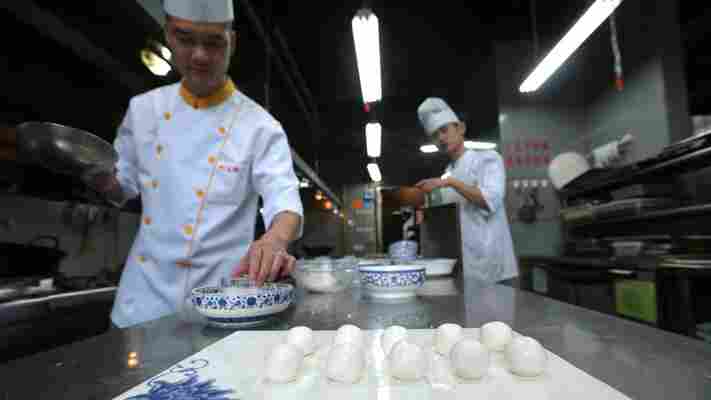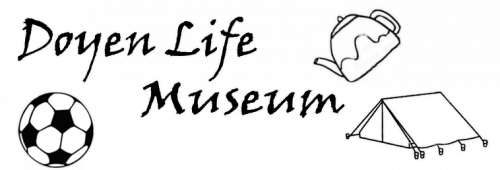

(Credit: Runze Yu)
Roughly 150km south of Shanghai facing the East China Sea, the ancient city of Ningbo is among China’s oldest and most important trading ports. Believed to be one of the starting points of the Maritime Silk Road and the birthplace of Chinese landscape painting and poetry, Ningbo is also the home of one of the country’s most beloved comfort foods: tangyuan , a sweet dumpling whose name is synonymous with harmony and union. Each winter, millions of people in Ningbo and throughout the country sit down with loved ones to savour these hand-rolled desserts in a 1,100-year-old tradition that’s as much about family as it is about food.

(Credit: Runze Yu)
Tangyuan are sweet, circular dumplings made from glutinous rice flour. They can range in size from a marble to a ping-pong ball, be steamed or fried and be served plain or with a filling. But traditionally, the balls are stuffed with a rich, ground black-sesame filling or red bean paste, boiled and served hot in a sweet ginger-flavoured broth. These bite-sized sweets have historically been linked with the first full moon of the Chinese New Year – a celebration known as Lantern Festival in which families come together on the final day of the 15-day Chinese New Year festivities (19 February this year). It’s a fitting food for the event: not only do the white dumplings resemble little floating full moons, but their round shape and that of the bowls in which they are served symbolise unity. In fact, the dish’s name sounds identical to the term for ‘reunion’ in Chinese ( tuán yuan ), and it’s widely believed that eating the dish with loved ones during the full moon will bring families happiness and good fortune in the new year.
(Credit: Runze Yu)
In China, tangyuan means family reunion. All [across the country], families get together during the New Year while eating tangyuan,” said Yuhuan Li, general manager of China’s largest tangyuan supplier, Varry Food Inc.
(Credit: View Stock/Alamy)
My first memory of eating tangyuan was when I was about six years old. Growing up in a small village in central China’s Hubei province, my extended family always got together during the Chinese New Year. I have clear memories of my aunt and grandmother coming to my house to chop the sweet sesame filling and roll the soft dough of fresh tangyuan in a basket in preparation for the Lantern Festival.
As a child, I didn’t have the luxury of eating many sweets, so tangyuan was a rare treat for me and something I looked forward to. Even now as an adult living in Beijing, whenever I bite into the doughy dumpling, I’m still transported back to my house, and those cold winter nights warmed by the presence of loved ones and those piping-hot rice balls.
(Credit: Runze Yu)
Tangyuan is believed to date back more than 1,100 years to the Tang dynasty (618-907 AD). During that time, people in Ningbo began eating a type of glutinous rice ball stuffed with black sesame, lard and soft white sugar. There were several names for the dish, but in the early 1400s, it became widely known as ‘ yuanxiao ’ (literally: ‘first evening’) in honour of the first full moon of the Yuanxiao (‘Lantern’) festival from which it was named.
Yet, legend has it that between 1912 and 1916, China’s then-president, Yuan Shikai, opposed the dish’s name because it sounded identical to the Chinese term for ‘remove Yuan’, and gave orders to change it to the not-so-imaginative ‘tangyuan’ (literally: ‘round balls in soup’). Remarkably, the ruler’s thin-skinned request worked – sort of. While people in southern China now refer to the rice balls as tangyuan, those in northern and central China – including in my village – still call them yuanxiao.
Today, even though the dessert has become widely available at supermarkets and restaurants year-round, families throughout China still freshly roll, fill and prepare the dish for the Lantern Festival – and nowhere is this truer than in Ningbo, where tangyuan is considered a local specialty.
Making tangyuan can be a time-consuming process. First, you crush black sesame seeds with a rolling pin and stir-fry them in a pan. Then, you mix the ground seeds with lard or pork belly fat and sugar to make the dark filling, and add cold water to glutinous rice to make the dough. Creating a small cup shape with the dough, you wrap the filling inside the glutinous rice and roll it into a ball with your palms. Finally, boil the balls in a mixture of water, sliced ginger and brown sugar so the ingredients melt together. When the balls float to the top of the broth, you can turn the heat off, add a sprinkling of sweet osmanthus flowers and serve. The dough should be more slippery than sticky, and biting into the boiled dumpling will cause the sweet and gooey filling to run onto your spoon like a lava cake.
While tangyuan and its northern namesake, yuanxiao, are virtually identical, these sweet siblings have a few subtle differences. Unlike tangyuan, which is rolled by hand, yuanxiao is typically placed in a flat bamboo basket in a cube shape and rounded by sprinkling it with water and rice flour while shaking the basket back and forth. As a result, its surface tends to be slightly drier and slightly chewier than tangyuan. While both varieties can be stuffed with a number of sweet ingredients – such as dried fruits and chocolate – tangyuan occasionally has savoury fillings as well, like crushed peanuts, walnuts and minced meat. Tangyuan tends to be served in a thinner soup compared to yuanxiao’s thicker broth.
(Credit: David Carillet/Alamy)
Tangyuan may be the most famous food of the Lantern Festival, but in southern China, it’s also commonly eaten a few weeks earlier during the winter solstice, which takes place on 21 or 22 December. The event, known as Dongzhi, falls on the longest night of the year and represents the triumph of light over dark as the days will soon become longer and restore peoples’ balance and harmony. Like the Lantern Festival, Dongzhi is traditionally spent with family, but unlike the white lunar-like tangyuan dumplings served to commemorate the first full moon, families often dye the dumplings red or pink during Dongzhi – fortuitous colours in Chinese society.
(Credit: Xinhua/Alamy)
Instead of waiting for their birthdays, many elderly Chinese around the world still insist that people become one year older after the Donghzi Festival. And like eating black-eyed peas in the American South, soba noodles in Japan or grapes in Spain to bring in the new year, eating tangyuan during Dongzhi is widely believed to bring people prosperity in the upcoming year.
According to a common saying: “If you do not partake of a red tangyuan and a white tangyuan, you will not grow a year older.” Common superstitions on the winter solstice hold that tangyuan should be swallowed in pairs for good luck, that a married person should leave two tangyuan in the bowl to have their wishes come true, and that a single person should leave one tangyuan for an auspicious year.
(Credit: Runze Yu)
Those lacking the patience or practice to prepare tangyuan themselves should head to downtown Ningbo and look for a statue showing a duck and a dog leaning on a barrel. This rather bizarre bronze marks the entrance to Gang Ya Gou, an informal eatery that serves some of the best tangyuan in town.
According to local lore, a young fisherman named Mr Gang Ya Gou (which roughly translates to ‘barrel-duck-dog’) opened the restaurant 93 years ago. While away at sea, the young man had dreamed of returning to Ningbo to eat his mother’s homemade tangyuan, so once he came back, he opened a restaurant featuring her recipe. Today, a popular Ningbo saying states, ‘Homemade dumplings are common, but nothing is more delicious than [those at] Gang Ya Gou’.
While that may be true here, for me, nothing quite compares to the freshly made dumplings my grandmother and aunt made when I was growing up. Like Mr Gang Ya Gou, I find that the further I travel, the more I miss my family’s tangyuan and the taste of home.
Soul Food is a BBC Travel series that connects you with cherished memories through comfort foods from around the world.
